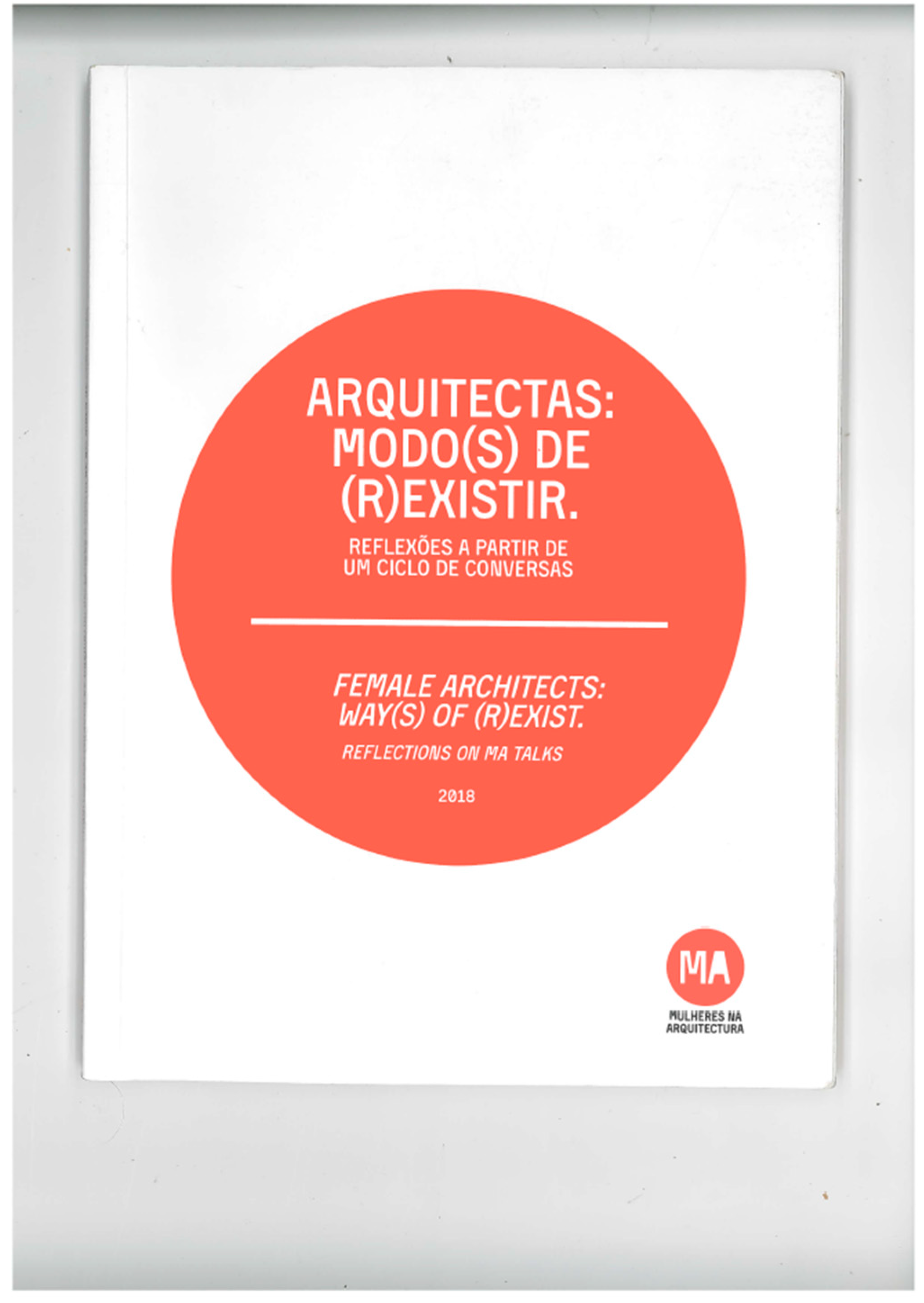Diverse Perspectives
The multiple voices that shaped this collection were those of the architects Célia Gomes, Cláudia Costa Santos, Felipa Roseta, Inês Moreira, Luz Valente-Pereira, Patrícia Santos Pedrosa, Paula Melâneo, Rita Ochôa, Rosa T. Sheng and Annelise Pitts, Lia Gil Antunes, Luísa Paiva, Patrícia Robalo Ribeiro and Sofia Castelo, who, besides a compilation of texts, offered quantitative and qualitative information about what it means to be a woman architect in Portugal in the twenty-first century, focusing on subjects such as female invisibility, gender stereotypes, sexism, barriers to employment, the balance between family life and career progression, sexual harassment, and numerous forms of silencing and constraining within the profession.
This work presents data confirming that even though women represent almost half of those enrolled in the “Ordem dos Arquitectos”, they still lack visibility among their colleagues and within society at large. In the preface written by Teresa Fragoso, as well as in other passages, Maria José Estanco was remembered as the first Portuguese woman architect (she received her degree in 1942), who “was never accepted by her male peers” (p. 9).
The diverse perspectives present in the book (
Figure 1) enhance the discussion. On one hand, the architect Cláudia Santos has an optimistic view of the historic advances concerning women’s presence in the world. She believes that she was lucky to have received an education that valued the social role of the feminine, or, like Luz Valente-Pereira said, “being a woman has always been as natural as breathing” (p. 39). Even though she was born into a traditional bourgeois family, she was raised like a man and spared from learning and performing household chores. On the other hand, Felipa Roseta provokes us by highlighting the inexpressive presence of women in public spaces and asking: Where are they?
In search of answers to this question, the researcher Patrícia Santos Pedrosa develops a research project in the History of Portuguese Architecture, entitled W@ARCH. PT|
Female Architects in Portugal: Building Visibility, 1942–1986, whose goal is to bring visibility to the work of women architects: “we only know what we get to see, hear and discuss, i.e., what is made visible and supports our understanding of the world” (
Pedrosa et al. 2018, p. 45). In Pedrosa’s view, we need to propose new teaching methods for architecture, as well as problematize history’s heroes.
Concerning the academic environment, Rita Ochôa stresses the sexism found in traditional customs and musical groups, the harassment and gender asymmetries present in architecture schools, e.g., the concentration of women in History and Theory, while men still dominate in Project, which is more directly related to professional practice. Ochôa raises important questions: What values and models are passed on to students? How do you teach architecture? How do you learn architecture? What women architects are shown?
With experience in the editorial field, Paula Melâneo presents disconcerting graphs regarding the gender distribution in curatorship and participation in international exhibitions, where women’s presence is minimal. She believes that, despite the advances, there is an established conservative power that hinders diversity.
The publication also includes the contribution of the North American architectural duo Rosa T. Sheng and Annelise Pitts, who have shared their experiences with Equity by Design. This initiative investigated the origins of the gender asymmetry seen in architecture and allied professions, proposing fair access to all and equity based on transparence, education, collaboration and trust. In the final chapters, called “Around the Talks”, the architects Lia Antunes, Luísa Paiva, Patrícia Robalo and Sofia Castelo talk about feminism, landscape architecture and public spaces.
Even though feminism appears discreetly in the book, it is possible to notice the political activism that moves some of the architects, such as Patricia Pedrosa and Lia Antunes, who freely use the following terms in their stories: activist, patriarchal, sexist, classist, racist, ableist, feminist.
This publication represents a new awareness, since it raises important questions that have been neglected within the History of Architecture, academia and professional practice, e.g., oppressions and discriminations that, besides causing constraints, have also contributed to numerous ways of silencing women.
Women Architects: Mode(s) of (R)existing is more than a record of a cycle of six talks that began in Lisbon. Through a diversity of perspectives, the book emerges as an important pillar in the construction of knowledge, in the difficult task that is the production of feminist epistemologies. This is the work that the “Women in Architecture” association has been developing in Portugal since 16 July, 2017 with great dedication and competence.





